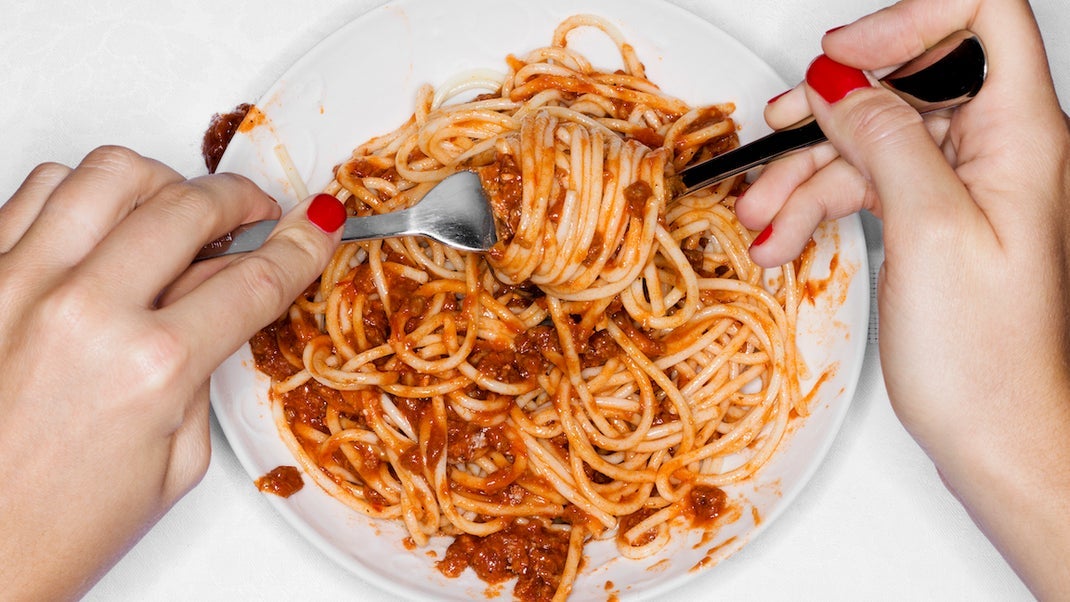Does Carbo-Loading Even Really Work?

It’s become something of a stereotyped custom in running communities to chow down on pasta the night before a big race. Typically this practice begins in high school cross country, for which the ritualistic Spaghetti Dinner is widely practiced in the United States in the name of “carbo-loading.” But does consuming a large amount of carbohydrates the night before a race actually work to support performance?
Yes, But…
In a word: Absolutely. But there are a few stipulations. Carbo-loading works great for races longer than 90 minutes. (So no you don’t need to do it the night before your 5k.) Fat-loading is the ticket for events extending beyond four hours. For anything shorter, not so much.
RELATED: The Trail Runner’s Guide to Carbohydrates
Carbo-Loading: History, Benefits, and Side-Effects
Carbo-loading dates to the 1960s, when athletes discovered that three to four days of carbohydrate restriction, followed by three to four days of carbo-binging, doubled muscle glycogen stores, which led to reduced fatigue during endurance races. Unfortunately, carbo-restriction also led to irritability and gastrointestinal distress. So athletes kept looking for a better way.
By the 1980s, athletes had found that a three-day taper accompanied by increased carb intake worked as well as the old seven- to eight-day routine — and with no side effects. In 2002 a University of Western Australia study showed that cyclists who pedaled hard for two and half minutes, pedaled all-out for another 30 seconds, and then loaded up on carbs saw an 80% increase in glycogen stores within 24 hours. And a 2013 University of Minnesota School of Kinesiology study found that simply increasing carb intake during the 24 hours before a race improved marathon times by 4%.
On the other hand, carbo-loading adds about 4 pounds to your weight, inhibits fat-burning, may not work as well for women and, as a race strategy, has been pretty much rendered obsolete by sports drinks, gels and other glycogen-replacement strategies. Still, to ensure adequate glycogen levels, it’s a good idea to increase carbs to 70% of all calories for three days before your race — and to taper.
How to Fat-Load
Fat loading is a performance-enhancing must for endurance events lasting four hours or more. Exercise scientist Dr. Timothy Noakes estimates that elite Ironman triathlon competitors burn fat at a rate of 50% above normal, following a period of fat loading.
RELATED: Understanding Glycogen, Your Body’s High-Performance Fuel
There are two good fat-loading methods:
• High-fat diet. Stick to a high-fat diet for seven to ten days before your event. Your body learns to function at low glycogen levels that would stop a carbo-loaded athlete in his or her tracks.
• Glycogen-deplete. Train after fasting, or reduce carbs after the preceding workout. This teaches your body to burn more fat (an almost inexhaustible source of energy within your body) while running. In other words, this is a method of “fat loading” by using your own fat stores.
All that said, anyone considering carbo-loading or fat loading might be wise to remember the words of multiple-time USA masters champion and former 2:13 marathoner David Olds: “It’s not a meal, it’s a race.”
—
Pete Magill is a running coach, world-class runner, and author. As a coach, Magill has led his masters clubs to 19 USATF National Masters Championships in cross country and road racing and has worked with athletes of all ages and abilities. He holds multiple American and world age-group records and is a 5-time USA Masters Cross Country Runner of the Year. Magill is author of Fast 5K, SpeedRunner, Build Your Running Body, and The Born Again Runner.